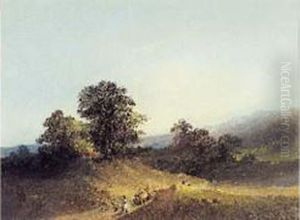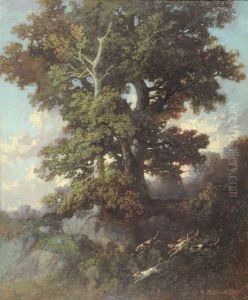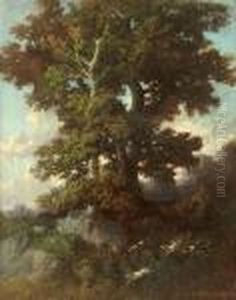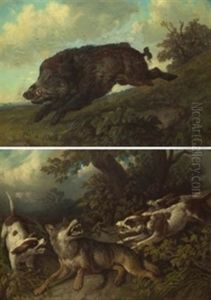Auguste Rolland Paintings
Auguste Rolland, not to be confused with the more well-known artists Auguste Rodin or Romain Rolland, was a French artist whose life and work have not been thoroughly documented in the annals of art history. Born on May 2, 1844, in Le Havre, France, little is known about his early life and artistic training.
Rolland's career unfolded during a period of great artistic transformation in France, with the rise of movements such as Impressionism and Post-Impressionism challenging traditional academic art. However, Rolland's own style and contributions to these movements remain unclear due to the scarcity of records. It is believed that he may have been active in the late 19th century, a time when Paris was the center of the art world.
Despite the lack of detailed information about his oeuvre, it is known that Auguste Rolland passed away on March 14, 1919. His death came after the end of World War I, a conflict that would have undoubtedly impacted the cultural landscape of France and Europe as a whole.
In the absence of more concrete information, one can only speculate about the nature of Rolland's work. It is possible that he was involved in the typical artistic circles of his time, engaging with the prevalent styles and artistic questions of the day. However, without significant evidence of exhibitions, critical reviews, or remaining works attributed to him, Auguste Rolland remains a peripheral figure in the history of French art.
As is the case with many lesser-known artists, Rolland's legacy may have been overshadowed by the towering figures of his time. The works of contemporaries such as Claude Monet, Edgar Degas, and Paul Cézanne dominated the period's artistic discourse, leaving little room for the recognition of more obscure artists. Nonetheless, each artist, including Auguste Rolland, contributed to the rich tapestry of art history, and the search for information about such figures continues to be an important endeavor for art historians.



